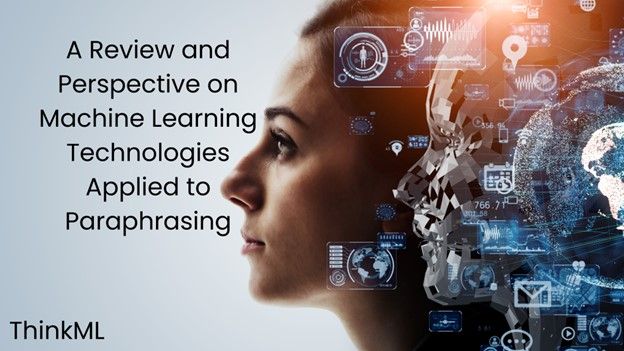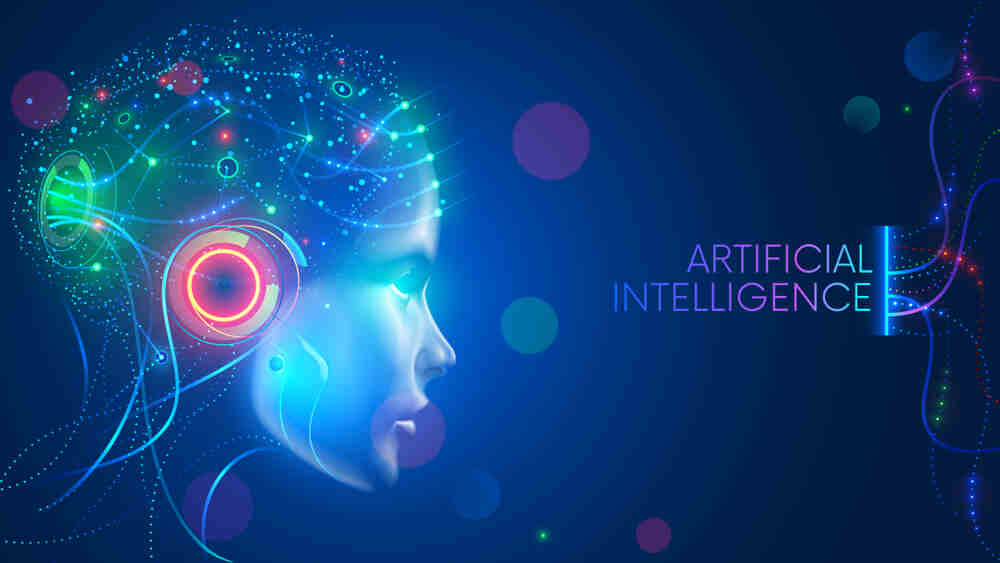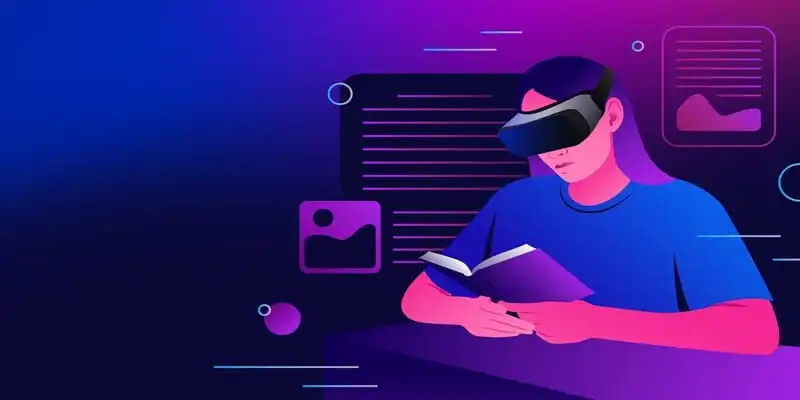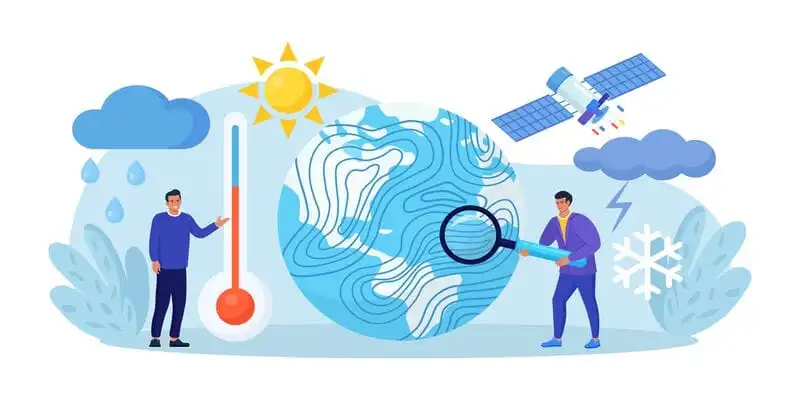A Review and Perspective on Machine Learning Technologies Applied to Paraphrasing
Machine learning is a remarkable AI application within the realm of technology. It could be applied to paraphrasing, an overlooked and undervalued task. Technological advancement in machines analyzes countless words written on innumerable topics and gives unique meanings behind those words.

Millions use paraphrasing tools, but most of the users do not have much understanding of them. These tools are now backed with machine learning techniques and play a key role in content creation.
So, how does all of this work? How does machine learning play a vital role in content creation, mainly paraphrasing? Read on.
What Is Machine Learning?
One of the most essential branches of artificial intelligence is machine learning. As the name implies, this feature of AI learns on its own based on data gathered and experience rather than relying on factors like user input.
Here is how machine learning works:
- Gathering data & material
- Preparing and choosing a model
- Training and evaluation
- Prediction and forecast
These diverse features enable machine learning to perform paraphrasing and grammar-checking tasks. The text predictor on our smartphones is one example of this.
What Are AI-Paraphrasing Tools?
These AI-based algorithms primarily rely on machine learning and NLP to carry out the tasks they have been programmed to do, such as rephrasing, revamping, or remodeling text.
How do These Tools Do That?
- Read and understand the initial content’s state
- Analyze standard terms, keywords, etc.
- Picking various synonyms
- Shifting sentences, changing content voice (active to passive, and vice versa)
As machine learning receives a significant portion of the credit in this process, all of these components primarily rely on AI and NLP because AI algorithms require AI to understand different components before modifying them.
Working on AI and ML based Paraphrasing tools with Examples
To help you understand everything about such tools, we carried out a test on one of the best paraphrasing tools present online. This tool is Paraphrasingtool.ai, and it can help you paraphrase your text and make it unique, and readable.
This tool is a bit different from conventional paraphrasers because this tool rephrases your text using AI. Here is an example:
Original Text:
ML and AI are helping humans in many ways. Paraphrasing is another area where machine learning is shaking things up and is improving the quality regularly.

Text Improver:
If you have specific text with vocabulary and sentence structure issues, this mode will paraphrase it and make it more readable and understandable for general readers.

Near Human:
This tool and other similar tools are backed with deep learning techniques that enhance the text, and make changes in a text like a human editor would do. Deep learning techniques are widely appreciated because of the results it offers.

Plagiarism Remover:
Plagiarism can be a problem for many people. Students, bloggers, marketers, and many companies need to make their text unique, which consumes a lot of time manually. This is where the paraphrasing tool can help. This will make changes in your text to remove plagiarism without going against the idea of the text.

Creative:
Getting inspiration and writing in a unique way can be daunting. Want to rewrite existing content again and again with new words and sentence structures? You can use this tool. Here is how it changes the text and makes it look more creative.

Academic:
This section takes text, paraphrases it, and simplifies it by making the sentence shorter and clearing the concept for the reader to understand easily.

Quill Text:
If you are writing for a vast audience of any age, you have to be more specific and clear about what you write to make the text easy to read and understand for everyone. This tool will help you in such situations.

Sentence Rephraser:
If you are more concerned about your text and want to paraphrase it sentence by sentence to avoid any issues, a sentence rephraser will help you. When you enter a sentence in the provided section, it will come up with ten different suggestions from which you can choose what you think is suitable.

Primary Ways AI and ML Work In Paraphrasing Tools
The working of AI in paraphrasing tools is heavily based on NLP(Natural Language Processing). It is the critical element that aids in computer analysis and understanding of human languages. For a computer to understand our languages, like English, it turns them into binary code. But it is not as easy as it sounds. This will be divided into three critical categories under ML and AI. They are:
Content Detection
Content detection is the first step. AI and ML work together in a paraphrasing tool and helps the computer to understand the text. It analyzes standard terms, detects the text's tone, and comprehends phrases and synonyms. These phases then go through the paraphrasing tool’s algorithm to help it understand.
Understanding With NLP
As mentioned before, NLP is the main branch of AI that aids in content rephrasing and language comprehension. This aspect of AI transforms our language so the machine can comprehend it.
Once it has, it gets ready for the following stage, which involves evaluating and carrying out the rewriting process. This fundamental machine learning element enables it to recognize particular patterns and secure data for future rephrasing.
Paraphrasing With AI
At this point, the tool's paraphrase feature rewrites the content. Once it has all the information required, the rephrase starts to rewrite your article and then shows you the output accordingly.
The text is modified by using different words, phrases, synonyms, and other elements without changing the content's meaning.
Paraphrase generation Techniques
There are various paraphrase generation methods, which can be divided into two groups.
Controlled Paraphrase Generation Methods
In this approach, a template or syntactic tree governs the generation of the paraphrases, and different methods can be used. For instance, In 2020, Kumar and Ahuja, with their collaborators, suggested a method for paraphrase generation. It uses LSTM (long short-term memory) neural networks to implement syntactic trees and tree encoders.
The same year, another method for generating paraphrases called the "retriever editor technique" was presented. This method chooses a source-target pair with a similar embedding distance to the source. After that, the editor must use a transformer to change the input sentence.
The retriever should choose the source-target pair with the most significant resemblance based on embedding distance from the source. The editor's responsibility is to adjust the input appropriately.
Pre-Trained Language Models
There are different pre-trained methods that use language models that have been fine-tuned, such as GPT2 and GPT3, to generate paraphrases.
GPT2 has an excellent capacity for language understanding because it is trained on a large open-domain corpus. This aims to fine-tune the weight of the GPT2 model that has already been trained.
Final Words
We now have many issues that can be solved thanks to technology. By using artificial intelligence to learn how people behave in their professional fields, the majority of these solutions are starting to become practical.
The paraphrase tool is an example because it can rephrase like a skilled writer, thanks to its cloud-based software. The results, which were made feasible by NLP & ML, are nearly flawless. The issues that arise with these tools are getting eliminated regularly as technology advances.


